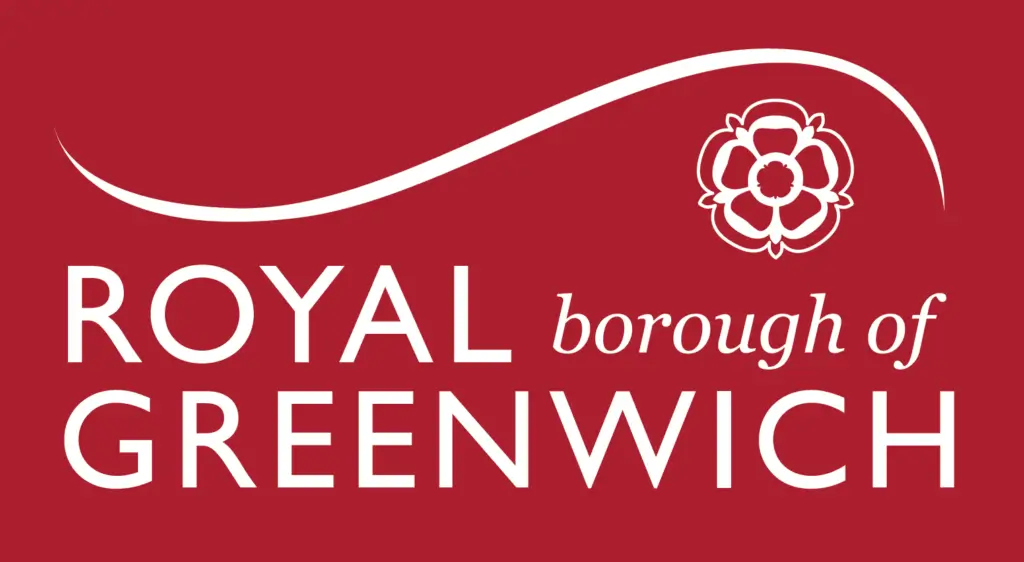If you’re trying to measure social value, you’re not alone. Whether you’re bidding for a major contract or managing a community investment programme, one thing is clear: social value is no longer a nice-to-have — it’s a necessity.
But with a growing number of frameworks and rising pressure to prove impact, many organisations are confused about how to measure social value meaningfully and efficiently.
In this article, we unpack what social value really means, explore popular measurement frameworks, and show how the right data — especially localised, real-time data — can transform your ability to win bids, meet ESG goals, and track your impact.
Why measuring social value matters
Social value is now a critical factor in winning contracts. For those bidding on national government, local authority, or large private sector contracts, measuring the social value of their work in ££ is literally a legal requirement to win work and meet contractual demands.
Bids must clearly demonstrate how projects will create positive social, economic, or environmental outcomes.
“At Jacobs, we’re seeing a 500% increase in the social value questions we’re getting asked at bid stage. And we have to get into a position where we can deliver against those commitments. Part of doing that is working with local charities.”
Michelle Levi, Director of Social Value at Jacobs
But without credible data or local insight, it’s hard to prove your value.
For those managing community investment and grant programmes, the pressure is equally intense. You’re expected to align giving with ESG or procurement outcomes — yet many teams struggle to capture and report impact data in meaningful and useful ways.
Everyone, from procurement and marketing teams to ESG and CSR leaders, is trying to nail the formula to create and measure social value.
The challenge? Finding a framework that works for your needs, and the right data to input into it.
Quick Social Value History Lesson
2012: The Public Services (Social Value) Act is introduced, requiring public service commissioners to consider social, economic, and environmental benefits (for the local area or community affected by the procurement) when awarding contracts.
2018: Reforms to the Act make it mandatory for government buyers to evaluate social value in major contracts.
2020: The Social Value Model is launched to guide consistent evaluation of social value in procurement.
2021: The model becomes mandatory across all central government procurement activity.
2023: The Procurement Act shifts focus from Most Economically Advantageous Tender to the Most Advantageous Tender, allowing buyers to prioritise wider public benefit and requiring suppliers to report progress against KPIs, including social value.
2024: Updates to the Social Value Act, revised Social Value Model, and an updated Social Value-centric National Procurement Policy Statement (NPPS) reinforce social value as a procurement priority.
2025: From 1st October, an updated Social Value Model becomes mandatory for all in-scope organisations (central government departments, executive agencies, and non-departmental public bodies). It requires a minimum 10% weighting for social value in tender evaluations, with a set of defined goals and success criteria for suppliers to follow.
What Is a social value framework?
A social value framework provides the structure and indicators you need to plan, measure, and report on the positive outcomes your work creates. It turns community outcomes — from increased wellbeing to job creation — into tangible, measurable value.
But with many frameworks out there, it’s easy to feel overwhelmed.
Challenges with measuring social value
Unfortunately, quantifying social value is really hard. Social change is complex and multidimensional. And businesses don’t have a universal methodology they can use to measure the social value they create.
So, everyone reports on social value differently. Not just from business to business. Even within a company, separate teams often take completely different approaches to tracking social impact and value. We even see reporting structures change month over month as people try to figure out the “right way” to report on social value.
This means there’s no standardisation across the data. It takes a really long time to pull your reports together. You can’t set informed goals or KPIs. And you struggle to get the data you need to paint a picture of the social value you create.
Choosing the right impact framework for your business
Putting an impact reporting framework in place makes the tough job of social value measurement a little bit easier.
A framework gives you an agreed-upon set of data points, allowing you to get the data you need faster. It also gets everyone on the same page and provides a platform from which your teams can set targets and make decisions.
Which impact framework you start with depends on your aims.
- Does your procurement team need to prove social value at a local level? You need a reporting framework that looks at regional or community impact.
- Do you need to tie your CSR or ESG efforts to specific social and environmental goals? Choose a framework tied to the 17 SDGs.
- Are you using social value to boost reputation and customer engagement? Do your stakeholders love multimedia content? Think about incorporating qualitative data and stories into your social value reports.
Take the time to understand cross-team objectives in your business and select a model that will work.
5 common impact frameworks to measure social value
Dozens of reporting frameworks exist. Maybe even hundreds once you consider all the bespoke solutions that businesses have developed on their own.
These are five of the common frameworks that many businesses use, which are useful as a starting point:
- The National TOMs
- SDG Framework
- HACT Social Value Bank
- Business for Societal Impact (B4SI)
- B Impact Assessment
The National TOMs (Themes, Outcomes, Measures)
The National Social Value Taskforce developed The National TOMs framework specifically in response to The Social Value Act. It’s becoming a widely accepted standard across the UK to measure social value.
Used widely in public procurement. Offers a set of Themes, Outcomes, and Measures (TOMs) to help standardise social value measurement.
Backed by the TOMs System, Social Value Portal is a useful tool which helps organisations measure, report and amplify their social value. You can get started using The National TOMs here.
- Pros of The National TOMs framework
- It frames social value in ways that matter to communities across the UK. Themes and outcomes align with national and local priorities like jobs, wellbeing, and sustainability.
- It contains financial proxy values to measure outcomes, enabling consistent, £-based valuation of social impact.
- TOMs can be embedded into procurement and contract delivery to drive long-term outcomes — from local job creation to improved community wellbeing.
- The National TOMs framework works well for businesses:
- That need to measure social value in terms of ££.
- Embedding social value into their procurement and management processes
- In development, housing, education, health, and public services industries
- Serving central and local governments, and third-sector organisations
Sustainable Development Goals (SDG) Framework
The 17 SDGs provide clear objectives for businesses committed to protecting the well-being of people and the planet. But goals are just lofty dreams without a system to measure progress.
The Inter-Agency and Expert Group on SDG Indicators (IAEG-SDGs) developed a global framework with 231 indicators to measure social value in the context of the SDGs. You can access the full framework here.
- Pros of the SDG Framework
- The SDGs make economic sense; achieving the SDGs could deliver £9.8 trillion worth of business savings and revenue by 2030.
- They support global accountability to develop sustainably.
- It’s widely accepted so businesses can use it to track social value across commonly understood benchmarks.
- The SDG framework works well for businesses:
- With global operations or serving global clients.
- Working with national or local governments.
- Focused on sustainable development initiatives.
- Working with multiple stakeholders.
- Concerned about risk mitigation.
- With long-term outlooks.
HACT Social Value Bank
Originally developed for the housing sector, the HACT Social Value Bank offers a set of robust, wellbeing-based financial proxies to help quantify the social impact of community and tenant-focused interventions.
It uses a consistent method based on the UK Treasury’s Green Book and is widely used by housing associations and local authorities. See the HACT Social Value Bank here.
Pros of the HACT Social Value Bank:
- Provides a large library of pre-calculated financial values based on wellbeing outcomes.
- Based on credible academic research and public sector methodologies.
- Designed to be consistent, repeatable, and comparable across projects.
The HACT Social Value Bank works well for businesses:
- Working in housing, construction, infrastructure, or regeneration.
- Focused on delivering measurable wellbeing outcomes that contribute to social value.
- Looking for a practical way to report social impact in financial terms.
- Running projects that improve quality of life for tenants or local communities — such as housing upgrades, employment programmes, or social inclusion initiatives,
Business for Societal Impact (B4SI)
The B4SI framework provides a global standard for businesses to manage and measure corporate social impact. It organises social activities under three pillars—inputs, outputs, and impacts. Here’s a guide to getting started with the B4SI Framework.
- Pros of the B4SI Framework
- Apply them at your own pace.
- You can choose which parts are relevant to your business.
- B4SI offers a member network so you can connect and learn from other businesses with similar goals.
- The B4SI framework works well for businesses:
- Of any size or industry
- Specifically addressing social issues
- With heavy CSR initiatives
B Impact Assessment (BIA)
B Lab developed the B Impact Assessment (BIA) as a means to certify companies as B Corporations. Businesses can apply this framework to evaluate how their operations impact employees, communities, environments, and customers. It uses 250 questions to examine your company’s policies, practices, outputs, business models, and positive outcomes. You can get started with the BIA here.
- Pros of the BIA framework
- It aligns with long-term objectives.
- You can apply it to products, processes, and business structures.
- It’s increasingly recognised by consumers as a way of communicating a businesses commitment to social value.
- The BIA framework works well for businesses:
- Seeking B Corp certification.
- Committed to being a force for good.
- Focused on measuring and reducing the total impact of their operations.
Each of these can offer value — but their success depends on the quality of data and the relevance of your measures.
Whether you’re applying for a bid or running a grant programme, an effective framework is only as good as the information it relies on.
To make your measurement meaningful, you need:
- Local relevance – Are you addressing real community needs?
- Credible data – Can you back up your claims with measurable outputs and outcomes?
- Ongoing tracking – Can you show what happened, not just what you planned?
That’s where platforms like ActionFunder come in.
How ActionFunder supports your social value measurement
ActionFunder is a framework-agnostic tool that gives you the data you need and easily plugs into your chosen social value framework.
Use it to identify VCSE partners that can delivering community projects which meet your tender’s social value criteria and priorities. Access data on the estimated beneficiaries for each community project, if funded. Include this data in your bid to boost your social value score.
If you win the bid, simply set the fund live to quickly and easily realise those forecasts. Creating social value doesn’t get much easier than that.
It helps business development teams:
- Find high-impact local VCSE partners for localised social value creation
- Identify ready-to-launch local projects that align with the tender criteria
- Plug up-to-date, community-verified data into your bids
- Start delivering social value commitments at the touch of a button
“I see ActionFunder as an essential tool for contractors who want to deliver targeted, locally-specific Social Value work effectively.”
John Walmsley, Social Impact Executive – Casey Group
It helps community investment and ESG leads:
- Track social value delivery in real time with dashboards and auto-generated reports
- Share powerful updates with stories, stats, and photos
- Align community giving with broader ESG, CSR, or procurement frameworks
“We’re already seeing the positive impact that ActionFunder is having on our social value offering and it’s fast becoming an indispensable tool across our business.”
-Simon Richards, Sustainability Director – Sir Robert McAlpine
ActionFunder’s approach to impact measurement
- Framework-agnostic – our data can be downloaded to be used in the chosen framework of a company or organisation
- Our reports collect the data (measures or outcomes) that to fulfill the requirements of different reporting frameworks
- Delivers quantitative outputs and qualitative outcomes.
- Available at a glance via a user-friendly dashboard.
- Includes real-time shareable updates that capture community impact.
Whether you’re bidding for work or managing a grant fund, the right measurement strategy starts with understanding local needs and tracking real impact. That’s how you win contracts, engage stakeholders, and create social value that truly matters.
If your business needs to proactively forecast, quickly create, and accurately measure social value, get a demo of ActionFunder today.



